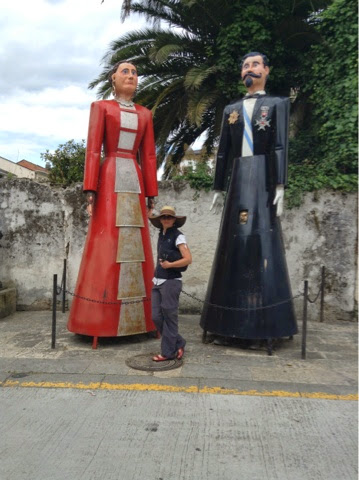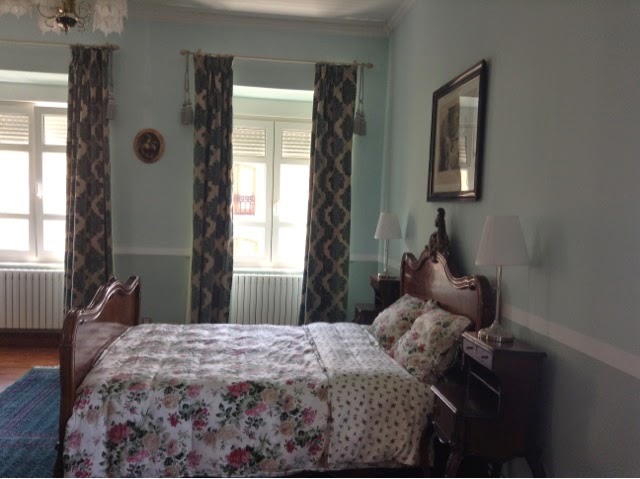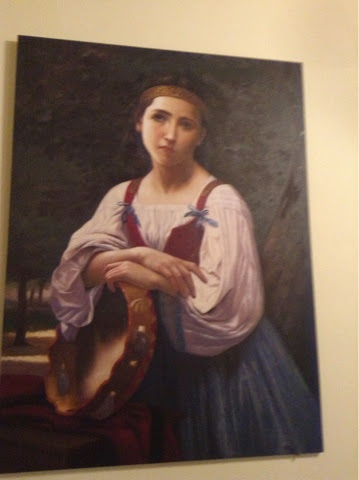Whilst in town topping up my phone a just delightful expat Irish chap and his Spanish wife helped navigate me through a 'Manuel' experience (think Fawtly Towers). Whilst Robert Good was translating for me, Jude was chatting to his wife (she had a classicly beautiful Spanish name which neither of us can spell). The upshot was an invite to their home -5km out of town- for a cuppa char. Great! Only an hour's walk for a decent tea, so off we set. Turned out to be '5 Spanish kilometers' - 10 kms!
The house was an 'Indian Palace' located in a small previously whaling coastal village. Being Madrid-based it had taken the Good's nearly 10 years to meticulously renovate this 4 stored 8 bedroom each with en suite and lounge mansion to it's formal glory. They had kept true to it's orginal decor, enabling 14-20 people to be accommodated in absolute luxury.
The house has 52 windows and the ceilings had hand painted detail in places. This they have replicated. Above the 4th floor (the old servants quarters) was a turret that housed the first commercial light house for the coast. After the orginal owner died the local community fund raised to keep it going for a while.
The original owner was reputed to have been an extremely short man, who the locals used to tease about his height. Jutting out from the turret was an 'L' shaped bridge. Local rumour has it that he 'got his own back' by walking out onto the bridge and peed on the people on the street below!
The house during the war housed soldiers. As with many of the palaces, maintenence became an affordabilty issue and it was eventually left to disrepair. The house is a local monument so has restrictions on modernizing.
It also had a variation of a building we have seen often during our walk. Many of these structures where falling down, some well preserved. Apparently they are a culturally significant building and you can't pull them down, even if falling down. We had concluded these structures where orginally a whare kai type structure. Bob Good confirmed these are buildings for storing food - designed to hang salted meat and corn etc. They have slat lips to stop rodents entering them and very thin air vents. What we have noticed on our walk is that these buildings tend to be used more for accomodation than food storage.
It also had a variation of a building we have seen often during our walk. Many of these structures where falling down, some well preserved. Apparently they are a culturally significant building and you can't pull them down, even if falling down. We had concluded these structures where orginally a whare kai type structure. Bob Good confirmed these are buildings for storing food - designed to hang salted meat and corn etc. They have slat lips to stop rodents entering them and very thin air vents. What we have noticed on our walk is that these buildings tend to be used more for accomodation than food storage.







It sure is a great way to see people and their lives
ReplyDelete